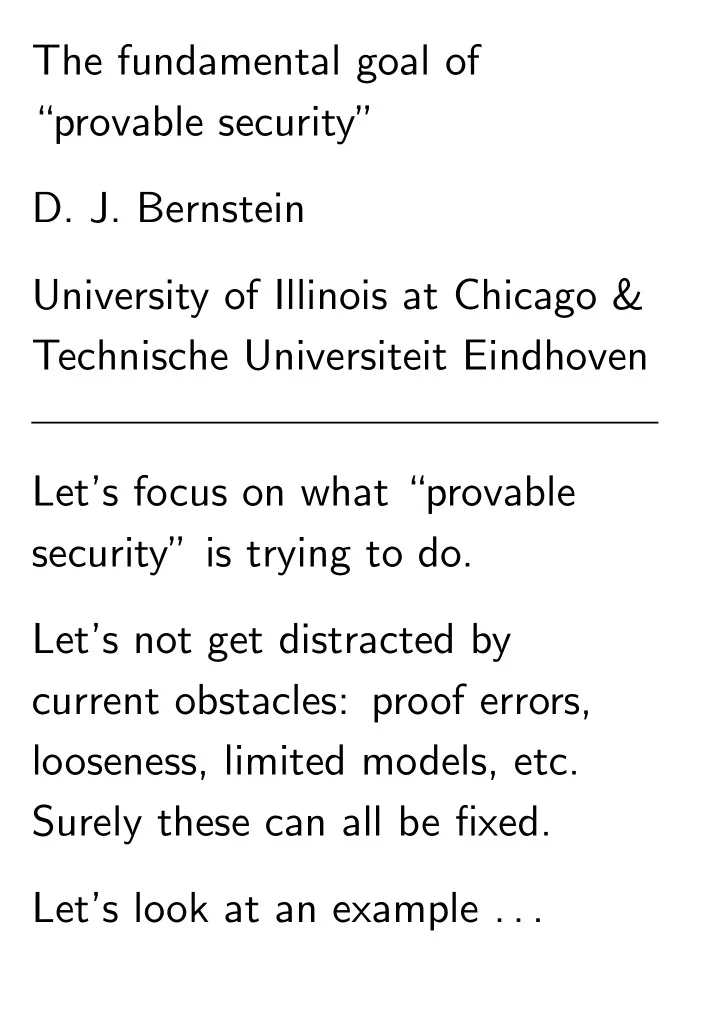

The fundamental goal of “provable security” D. J. Bernstein University of Illinois at Chicago & Technische Universiteit Eindhoven Let’s focus on what “provable security” is trying to do. Let’s not get distracted by current obstacles: proof errors, looseness, limited models, etc. Surely these can all be fixed. Let’s look at an example ✿ ✿ ✿
Chaum–van Heijst–Pfitzmann, Crypto 1991: choose ♣ sensibly; define ❈ ( ①❀ ② ) = 4 ① 9 ② mod ♣ for suitable ranges of ① and ② . Simple, beautiful, structured. Very easy security reduction: finding ❈ collision implies computing a discrete logarithm.
Chaum–van Heijst–Pfitzmann, Crypto 1991: choose ♣ sensibly; define ❈ ( ①❀ ② ) = 4 ① 9 ② mod ♣ for suitable ranges of ① and ② . Simple, beautiful, structured. Very easy security reduction: finding ❈ collision implies computing a discrete logarithm. Typical exaggerations: ❈ is “provably secure”; ❈ is “cryptographically collision-free”; “security follows from rigorous mathematical proofs”.
This is very bad cryptography. Horrible security for its speed. Far worse security record than “unstructured” compression- function designs such as BLAKE.
This is very bad cryptography. Horrible security for its speed. Far worse security record than “unstructured” compression- function designs such as BLAKE. How did we figure this out? Cryptanalysis! Security losses in ❈ include 1922 Kraitchik (index calculus); 1986 Coppersmith–Odlyzko– Schroeppel (NFS predecessor); 1993 Gordon (general DL NFS); 1993 Schirokauer (faster NFS); 1994 Shor (quantum poly time).
A security reduction can be a useful guide to cryptanalysts : “to attack ❈ , focus on DL.”
A security reduction can be a useful guide to cryptanalysts : “to attack ❈ , focus on DL.” But if you advertise the “provable security” of ❈ to cryptographic users then you’re a snake-oil salesman. “Provable security” has very little correlation with actual security, maybe even negative correlation: ❈ ’s structure helps the proof but also helps attackers . “If it’s provably secure, it’s probably not” —Lars Knudsen
Not everyone agrees: “The only reasonable approach is to construct cryptographic systems with the objective of being able to give security reductions.” —Ivan Damg˚ ard
Not everyone agrees: “The only reasonable approach is to construct cryptographic systems with the objective of being able to give security reductions.” —Ivan Damg˚ ard This approach produces papers but does not produce security. From a security perspective, the only reasonable objective is to construct cryptographic systems that will survive cryptanalysis . Users should select cryptographic systems based on cryptanalysis .
Recommend
More recommend